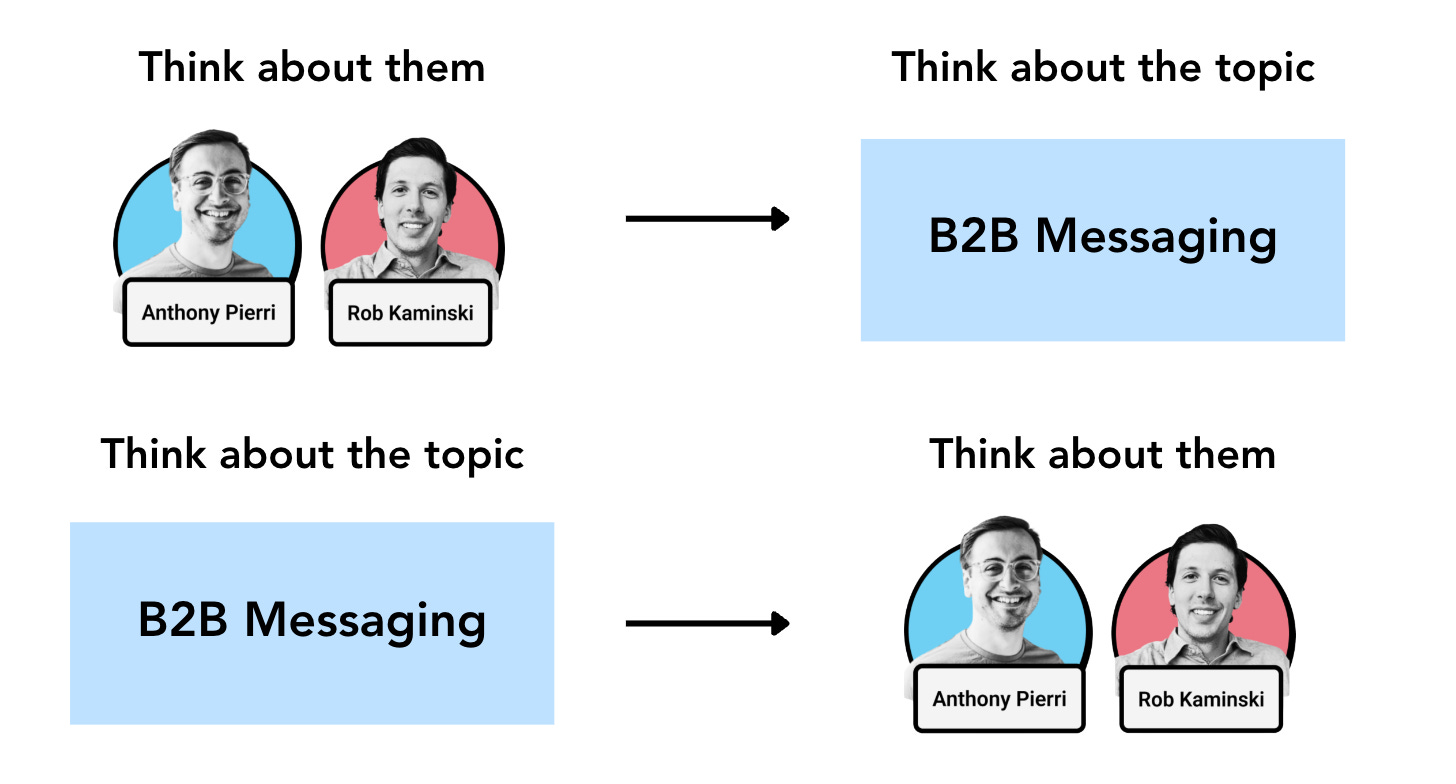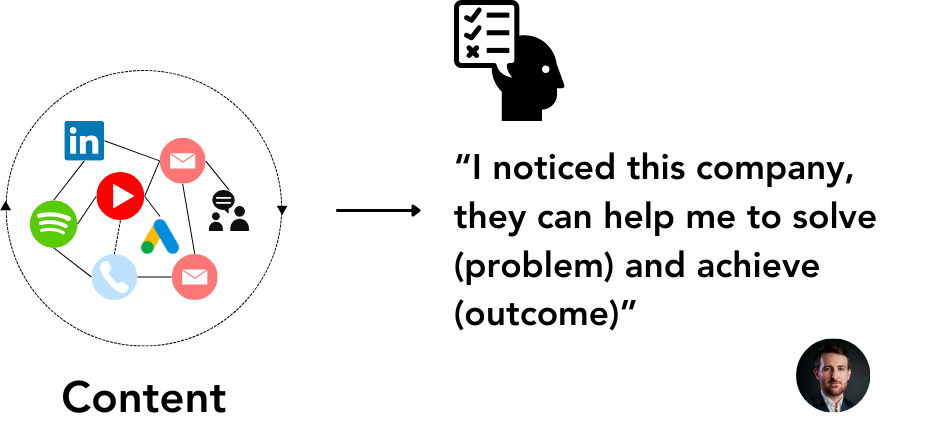They built a $100K/mo business with LinkedIn (Case Study)
How Robert and Anthony created FletchPMM
Robert and Anthony built a $100k/mo business.
Without paid ads, without a complex funnel, and without “growth hacks”.
It’s pretty impressive so I asked them if I could create a piece of content about them.
And they said yes:
So in this newsletter, I’m going to break down their business for you.
In this guide, you will learn:
How they are using the 1-1-1 principle to get to $100K/mo
How they positioned their brand (and personal brands) to become the go-to-expert
How they attract clients with their LinkedIn content
(All the concepts shared in this case study are explained in details in my course)
⚠️ Disclaimer: This analysis is based on publicly available information (LinkedIn, websites, and conversations) and reflects my personal interpretation. While I have Robert and Anthony's approval to write this newsletter, please note that we have not worked together. Therefore, this is an analysis, not a case study of a project I was involved in.
How they are using the 1-1-1 principle to get to $100K/mo
Let’s start with a simple truth: you don’t need 3 offers or 3 channels to go to $1M ARR.
(If you are below this revenue and you are already multiplying tactics, there might be a problem with your offer)
In order to go to $1M ARR (it works above too), you can apply the 1-1-1 rule:
1 target / 1 offer / 1 channel
Here’s how Robert and Anthony applied the rule for Fletch:
1 target with one specific problem: They help early stage B2B businesses to write their homepage messaging
1 offer: They sell a series of workshops and the wireframe of your homepage for around $10,000
1 channel: They find clients on one channel which is LinkedIn, I’m going to break down their strategy
While most entrepreneurs feel they need to do 100 things to find their product market fit and reach $1M of revenue, focus is actually the most effective way.
A simple offer for a complex need
Creating your positioning and messaging strategy as a B2B Business is crucial and complex. It’s hard because there are so many options but you need to focus.
FletchPMM is fixing this complex problem with a simple offer.
Here’s what you get when you work with them:
Three consulting sessions on Zoom
Completed positioning and messaging canvas
Webpage wireframe with production-ready copy
30min go-to-market consultation
Access to Best Practices Notion Database
Btw if you need help with your B2B Messaging, here is their website: fletchpmm.com
The central output is a webpage wireframe with production-ready copy. This can be used by customers at the end of the 3-week process, so there is a fast time to value (TTV).
I truly think the success of FletchPMM (Robert’s and Anthony’s business) is based on this core principle: 1 audience, 1 offer, 1 channel.
Now that they’ve built this offer and they have a strong portfolio of clients, they could add more offer. Let’s see what they do in the upcoming years and how the business evolves.
🔑 Key takeaway for you:
So if you are a B2B early-stage business and struggling to get to $1M ARR, you might need to narrow down your audience, offer, and channels in order to focus.
Focus on 1 audience, 1 offer, 1 channel
Consolidate your business with the 1-1-1 rule
Expand when you are ready to add an offer
I am helping you to identify your core audience, ideal customer profile, and channels in my course “authority-first content”.
→ Get more information: pierreherubel.com/course
How they positionned their brand (and personal brands) to become the go-to-expert
Something that is killing most businesses is the shiny object syndrome. It’s when you always pursue new bright ideas that seem easier and better than what you’re doing. I’m sure you had the feeling before.
💡 Here’s how to beat the shiny object syndrome:
Understand that FOCUS is the key to initial growth (as explained in this case study)
Define clear initial goals, and create a ‘later’ wish list (Example: this year we focus on target A, and next year we’ll add target B if possible)
Limit new commitments: don’t add too much on your plate while your business is still in early stage growth mode (example: don’t start a side business because you’ve heard that you need multiple income streams)
And of course, discipline is THE key factor of success here.
Well, Anthony and Robert don’t have the shiny object syndrome. They decided to focus on 1 key position.
→ Early stage B2B messaging
They focused all their efforts on this (content, pages, podcasts, etc). Every time they say something in public, there is a link to messaging from close or far. The output of this is a clear positioning.
They went from ‘desired positioning’ to a real market positioning with a messaging strategy, consistency across channels, messaging repetition, and content.
I created this graph to explain the link between positioning (in red) and messaging (in green).
The clear (and strong) positioning of FletchPMM came from 3 main elements:
Clear messaging strategy: they wrote a set of messages based on the current limitation of their audience, their capabilities, and how they solve problems.
Repetition: they repeated the same message over and over (because our brain recalls more repeated information).
Good content: they continuously shared good content on LinkedIn to convey these messages (explained in part 3)
And the result is brilliant:
People associate their brand FletchPMM with messaging. They are top of mind.
Think about them → think about messaging
Think about messaging → think about them
And this is exactly what you need to achieve for your brand too: being top of mind of one specific expertise. This is super powerful. It will lead to 3 types of results:
More inbound demand: they contact you when they need this expertise;
Easier sales calls: people trust the expert more (rather than generalist that can do anything);
Better word of mouth: People will refer you when someone asks for expertise in your area.
So one day, when someome from their audience needs a messaging job, they will think about Fletch first. Because they know they are the go-to-experts.
Here’s what happens when your audience understands what you do:
🔑 Key takeaway for you:
As a B2B business, creating top of mind awareness is an important objective.
Find a clear positioning based on your audience’s problem
Create your messaging strategy and stick to it
Deploy your messages consistently
I am teaching you how to set up your positioning, posture, point of view, and messaging in my course “authority-first content”.
→ Get more information: pierreherubel.com/course
How they find clients with their LinkedIn (breakdown of their content strategy)
In this part, you’re going to discover:
Robert’s and Anthony’s content strategy
An analysis of their LinkedIn profiles and CTAs
A breakdown of their LinkedIn posts
Their 5-part simple content funnel (from content to sales)
This sentence describes well their content strategy:
Show the expertise, sell the implementation
Show the expertise: they publish their messaging and positioning frameworks so anyone can reuse it. In every post, they share tips on how to write proper messages.
Sell the implementation: their audience can apply the frameworks and exercises on their own but it’s faster, easier, and wiser to do it with them.
Once you're familiar with their expertise and need their service, the only question is:
→ “Do we have the budget?”
Well the budget is $10,000 (or $7,500 under certain conditions) and I believe it’s worth it for an early stage B2B startup because it will guilde how they present themselves to the market. But for people who can’t afford it, they can follow the free content or access their library of best practices for $50.
This example gives you a good overview of the difference between your audience and your ICP. Your ICP will buy from you, but your audience will also consume your content.
Audience: people who consume your content
ICP: people who consume your content and buy your solution (that you designed for them)
For example, a product marketer at an established company may not purchase their service, but they might engage with their posts, increasing visibility to their network.
In my authority-first content course, I teach you exactly how to pinpoint your audience AND your ICP so you get content growth AND sales.
An analysis of their LinkedIn profiles and CTAs
Anthony and Robert have a similar LinkedIn profile where they explain what they do.
The banner’s tagline is clear: “I help founders market hard-to-market products”
The CTA is simple: “let’s rewrite your homepage”
The headshots are simple without specific background color
You can find their profiles here:
Anthony https://www.linkedin.com/in/anthonypierri/
Robert https://www.linkedin.com/in/heyrobk/
They use the featured sections to higlight 3 elements:
Their library of best practices
A link to their website with a CTA “work with Rob & Anthony”
Posts with a lot of engagement
Their content strategy relies mainly on sharing advanced messaging and positioning frameworks
A lot of entrepreneurs say “I should not talk about the same information too many times”, “the audience will get bored”, or “we said this already”. But they are missing one crucial point of a good content strategy: repetition.
You need to repeat the same message over and over with different angles. And that’s what Robert and Anthony are doing with their content.
Let’s dive in some of their content.
A. They share comparative graphics to show positioning and messaging options:
They often share real business examples which make the content pragmatic and interesting to read. They also compare different options to be exhaustive.
B. They share their entire Positioniong & Messaging Canvas they use for their clients:
C. They use humour to prove their point:
They also use a lot humour content that really shows that they understand B2B messaging problems. This is a clever way to prove they've seen a lot of problems and are able to identify patterns. They make fun of the negative patterns.
D. Their feed is consistent
It’s really easy to spot their posts because they use consistent colors and shapes. You can spot it’s THEM within seconds. They also get copied a lot, but unfortunately that’s part of the game.
They have installed a simple 5-step content funnel
When your offer is clear and is fixing a painful problem, you’ll get inbound leads. In order to get them, you need to capture demand. For this they use a simple demand capture system.
⚠️ As explained in the disclaimer, I created this case study based on publicly available information. They might do others actions too (in DMs, emails, events, etc).
So you should keep in mind that inbound leads are great but you should also proactively engage in warm outbound and social selling to close deals.
Here is the 5-step content funnel:
LinkedIn posts about positioning & messaging
CTA “work with us” or “let’s rewrite your homepage”
More details on their website with the process (plus a video)
Pricing with a CTA “Start the process”
Calendly to book a discovery call
🔑 Key takeaway for you:
In order to become ‘top of mind’ and get inbound leads, you need to publish content consistently.
Turn your messaging strategy into a content strategy
Share your knowledge, and sell the implementation
Publish unique and educative content consistently
Install a demand capture system to get leads
I am teaching you how to create your content strategy, choose your content pillars, build your content plan, ideate, and create content in my course “authority-first content”.
→ Get more information: pierreherubel.com/course
Alright that’s the end of this case study, I hope you enjoyed it.
Thank you to Anthony and Robert for accepting to get featured in this edition!
Go follow them on LinkedIn if you don’t yet and contact them for messaging work.
All the concepts shared in this case study are explained in details in my course























